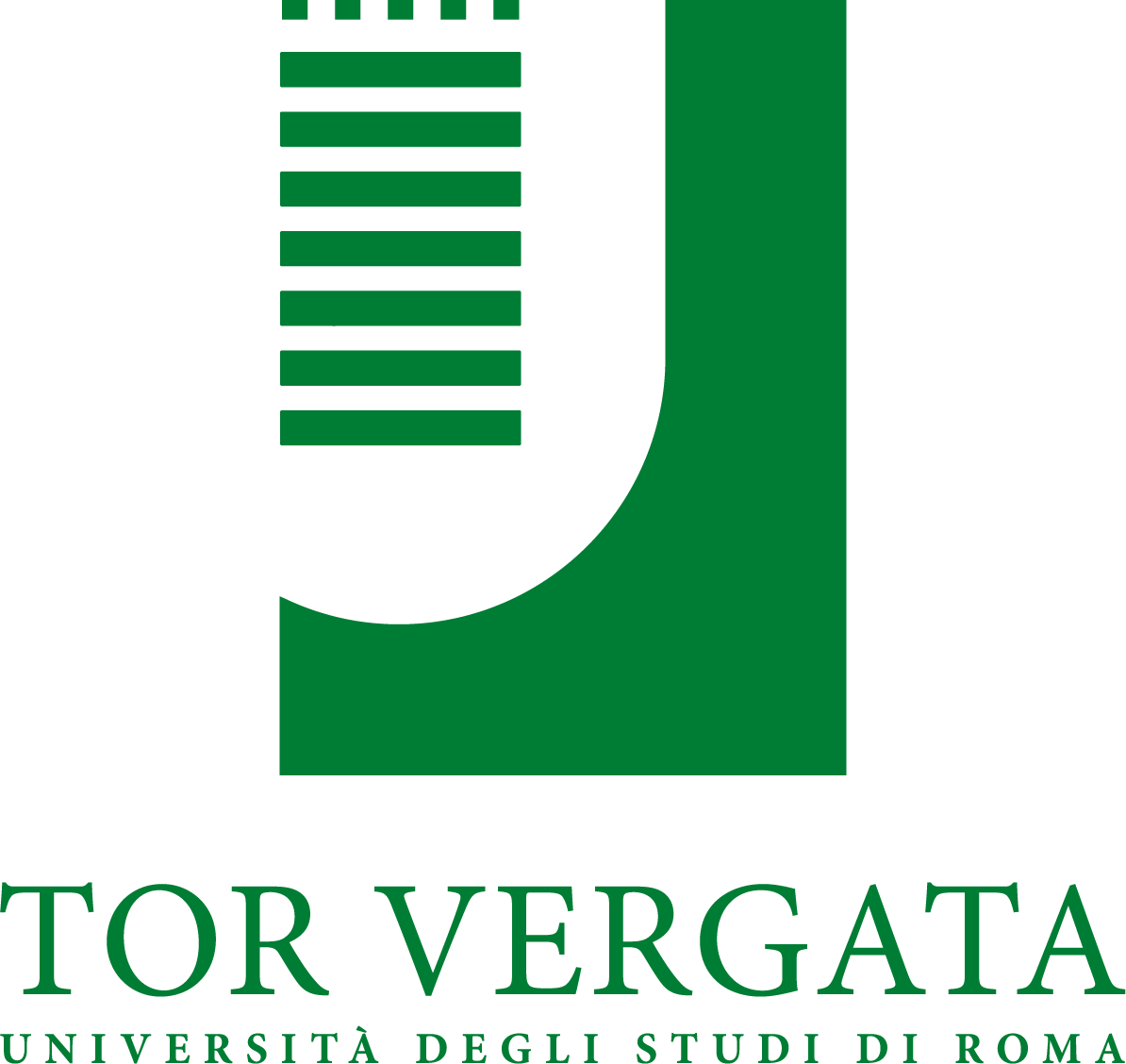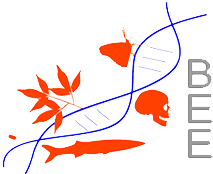Curriculum Vitae
1969 -1974 Graduate in Biology, thesis “Identification and analysis by a gas-chromatographic method of polyamines in human body fluids”. (summa cum laude) University of Rome “La Sapienza” Rome, Italy
PROFESSIONAL EXPERIENCE:
1974-1979 Post-doctoral Fellow, Department of Biology, Laboratory of Cytology and Histology , University of Rome La Sapienza, Rome, Italy,
1979-1982 Research Associate, Laboratory of Cytology and Histology , University of Rome La Sapienza, Rome, Italy,
1983-2007 Assistant Professor, Department of Biology, University of Tor Vergata, Rome, Italy
1984-1985 Guest Researcher, Sec. on Enzyme Chemistry, NIDR, The National Institutes of Health, Bethesda, Maryland, USA
1985-1989 Visiting Associate, Laboratory of Cellular Development and Oncology NIDR, The National Institutes of Health, Bethesda, Maryland, USA
1989-1992 Visiting Scientist, Section on Developmental Genetics, Human Genetics Branch, The National Institutes of Health, Bethesda, Maryland, USA
1992- present Head of the Laboratory of Cytology, Histology & Experimental Oncology, Department of Biology, University of Tor Vergata, Rome, italy
2007-present Associate Professor, Cytology and Histology, Department of Biology University of Tor Vergata, Rome Italy
2014 Positively selected as Full Professor for Comparative Anatomy and Cytology in the 2012 National Scientific Enabling (Abilitazione Scientifica nazionale)
Research Specialization: Cell Biology, Histology, Experimental Oncology, Biochemistry, Cancer Biology
TEACHING ACTIVITY
1990-1991 Professor of the course of “General Biochemistry” for the Specialization School in Biochemistry and Clinical Chemistry, University of Naples, Faculty of Medicine.
1991-1992 Professor of the course of “Embryonal and Foetal Biochemistry” for the Specialization School in Biochemistry and Clinical Chemistry, University of Naples, Faculty of Medicine.
1991-1994 Professor of the course of “Cell Cultures” for the Specialization School of Biotechnological Applications, Department of Biology, University of Rome “Tor Vergata”, Faculty of Sciences.
1994-2000, Professor of the course of “Cell Biology” Department of Chemistry, Faculty of Sciences, University of Rome Tor Vergata.
2001-currently, Professor for the course of “Cytology and Histology” for the students of “ Cellular and Molecular Biology”, “Human Biology” and “Biological Sciences”, Faculty of Sciences, University of Rome Tor Vergata.
2004- 2008, Professor for the course of “Applied Biology” Department of Chemistry, Faculty of Sciences, University of Rome Tor Vergata.
2004 – 2005 Professor for the course of “Cellular Communication” for the students in “Cell and Molecular Biology”, Faculty of Sciences, University of Rome Tor Vergata.
2007 – currently, Professor for the courses of ” Laboratory of Experimental Oncology” and “Principles of Experimental Oncology” Faculty of Sciences, University of Rome Tor Vergata.
PROFESSIONAL SOCIETY MEMBERSHIP:
1987 American Society for Cell Biology
1989 Society of Amino Acid Research
1990 Italian Society of Biochemistry
1994 New York Academy of Science
HONORS AND AWARDS:
1989 -Invited Speaker at the “Gordon Research Conference on Polyamines” Salve Regina College, Newport, RI, USA
1991-Section Editor of the journal “Amino Acids” Springer Verlag, New York, Vienna
2003-2006- Member of the Board of Directors of the University of Rome “Tor Vergata”
2009-Member of the Board of the journal “Journal of Amino Acids”, Sage-Hindawi
2010-Invited Speaker at the “Gordon research Conference on Transglutaminase” Davidson College, Davidson, NC, USA.
2012-Member of the Board of Editors of the journal “American Journal of Life Sciences” Science Publishing Group New York, USA.
2014-Discussion leader “Transglutaminases in oncogenesis and metastasis development” at the “3rd Gordon research Conference on Transglutaminase” Renaissance Tuscany Il Ciocco Resort Lucca (Barga), Italy
CONFERENCES ORGANIZED
1997 – President and Organizer of the meeting “Polyamines and Neurochemistry” – S. Marinella (Roma), Italy
2000- Member of the Scientific Comittee of the “2nd European Polyamine Conference” – Rimini, Italy.
2003- President and Organizer of the “8° International Congress on Amino Acids and Protein” – Rome, Italy
2005- Organizer and Chairman of the 9° “International Congress on Amino Acids and Protein” Vienna, Austria
2007- Organizer and Chairman of the 10° “International Congress on Amino Acids and Protein” Athens, Greece
SCIENTIFIC ACTIVITY
This group mainly studying the molecular mechanisms and the role of a class of enzymes called Transglutaminase in growth and tumor invasion. In particular, we are studying the possibility of controlling tumor growth through the induction of cell differentiation. It has been observed that Transglutaminases are involved in cell differentiation, and the increase in their catalytic activity leads to blockage of tumor growth. We are using for in vitro and in vivo experiments murine and human melanoma cells.
Melanoma is a malignant tumor from melanocytes. Melanocytes produce a dark pigment, melanin, which is responsible for the color of skin. These cells predominantly occur in skin, but are also found in other parts of the body, including the bowel and the eye (Figure 1). Melanoma can originate in any part of the body that contains melanocytes. Melanoma is less common than other skin cancers. However, it is much more dangerous if it is not found in the early stages. It causes the majority (75%) of deaths related to skin cancer. It is particularly common among Caucasians, especially northern Europeans and northwestern Europeans living in sunny climates. This geographic pattern reflects the primary cause, ultraviolet light (UV) exposure crossed with the amount of skin pigmentation in the population. The medical treatment includes surgical removal of the tumor. If melanoma is found early, while it is still small and thin, and if it is completely removed, then the chance of cure is high. The likelihood that the melanoma will come back or spread depends on how deeply it has gone into the layers of the skin. For melanomas that come back or spread, treatments include chemo- and immunotherapy, or radiation therapy.
Role of the post-translational modifications of protein induced by transglutaminases in cancer cells The correlation between metastatic power of cancer cells and post-translational modification of protein appears supported by our recent findings. We reported that a class of natural compounds known as methylxanthines, are able to increase soluble transglutaminase activity of cancer cells affecting their metastatic potential. The in vivo capacity of methylxanthines, to influence B16-F10 melanoma cells metastatic behavior, was investigated by injecting methylxanthines-treated melanoma cells into the bloodstream of syngeneic mice (C57BL6/N). It appeared evident an impaired ability of theophylline-treated cells to invade the target organ with a frequency of metastatic foci lowered of about 70% when compared with the control experiment (Figure 2, 3). We have published a new procedure employing the integrated image analysis of the histological section of invaded target organ, performed in the computerized image analysis center of our university, for the in vivo evaluation of the inhibitory effect of a drug on invasiveness and proliferation of murine melanoma cells. The mechanism of action of methylxanthines in cancer growth and metastasis is unknown, our recent findings obtained by the new procedure of image analysis suggest that theophylline and partially caffeine, possess two dominant effects on B16-F10 cells. One exerted in the overall inhibition of invasion, which affects the implantation of tumor cell in the target organ, and the second, shared with the other methylxanthines investigated, concerning the reduction of the growth of melanoma cells in the colonized organ, likely through the induction of differentiation. Study are in progress in order to include methylxanthines in the list of differentiation agents for cancer therapy. In fact, the role of methylxanthines, in particular for theophylline, in the control of melanoma progression in vivo, has been investigated by injecting melanoma cells into syngeneic mice treated with the drug. The results demonstrated a remarkable reduction of the frequency of the lung and liver metastases, as well as a significative increase of the lifespan of the treated animals, compared to the control ones (Figure 3). Furthermore, the direct involvement of transglutaminase in the antineoplastic effect has been recently demonstrated by treating mice with a plasmid containing the gene sequence for the enzyme. These preliminary experiments showed that the number of melanoma foci in the lung, related to tumor cell invasiveness, was highly decreased in the treated animals, whereas the metastases size, related to cell proliferation, was unchanged, suggesting a strong anti-invasive more than antiproliferative effect of transglutaminase activation.
Reduction of the metastatic power of melanoma by natural polyphenolic compounds
In the last years, great attention has been given to plant polyphenolic subsrtances in the control of cancer disease. These molecules, exert different functions in plants, due to their different nature, even though they possess a common biosynthetic pathway. The group of compounds more representative and spread is constituted by flavonoids, pigments accumulated in the vacuoles, or even in the chloroplasts and chromoplasts. They represent a great family of secondary metabolites enclosing anthocyanins, flavonols, flavons, cathechins, flavanons, and many of these molecules are present at high concentrations in the different tissues as glycosidic conjugates. Flavonoids, according to the different sostituents and to the saturation of C3 and C4 atoms in the B-ring of the benzopyrone group, include flavanols, isoflavons and flavanons. Many experimental evidences demonstrate that flavonoids exert important effects on different biological systems. In fact, they are used to protect the vascular integrity, as antiosteoporotic agents, antiepatotoxic and anti-inflammatory. They also act into the gastrointestional system, as antiulcerogenic, antispasmodic, antisecretory and antidiarroic agents. The majority of flavonoids resulted important in the human diet, because of their antioxidant activity. A group of flavons and methylated flavonoids have demonstrated antineoplastic activity. Many polyphenolic compounds have been demonstrated to interfere with enzymes implicated in the signal transduction linked to the proliferation activity of tumor cells, inhibiting the phosphodiesterase and protein-kinase cAMP-dependent. Then, there are many evidences that show that some flavonoids induce differentiation and apoptosis in some tumor cel lines, but it is not known yet whether flavonoids are able to enhance TGase activity in these cells. The interest in flavonoids as antitumor agents is still growing. These molecules actually represent one of the elements able to interfere with the growth of many tumor cell lines. In fact, one of the known effects of flavonoids on tumor cells in vitro is the partial inhibition of the proliferation of the treated cells. The flavanol quercetin, for example, shows an antineoplastic activity in several carcinoma cell lines, as well as genistein, an isoflavon present in soia seeds. Furthermore, it has been observed that the antiproliferative action of quercetin in K-562 cells is related to apoptosis stimulation, induction of differentiation, suppression of Ki-ras and c-myc oncogenes and rapid reduction of inositol-triphosphate levels. The interest grown in these last years in the antineoplastic potential of flavonoids, used at non-cytotoxic concentrations for tumor cells, suggests that polyphenolic compounds in general might, as well as methylxanthines, play an important role in the control of the hyperproliferative capacity and metastaticity of tumors, by means of induction of differentiation, the suppression of the proliferative signals, or by apoptosis induction. In our laboratory we are performing experiments to assay the effect of different flavonoids and anthocyanins on the capacity to reduce the metastatic power of murine B16-F10 melanoma cells and human SKMEL-110 melanoma cells, studying, on one side, the possible induction of cell differentiation and, on the other side, limiting the capacity of tumor cells to migrate through the exracellular matrix, to invade the basement membrane and to colonize the target organs. The in vivo experiments are performed by injection of selected tumor cells into syngeneic mice previously treated with flavonoids, and subsequent histological and morphometric analysis of the growth, neovascularization and number of metastases formed in the target organs.
Publicazioni (2007-2014)
Forni C, Braglia R, Mulinacci N, Urbani A, Ronci M, Gismondi A, Tabolacci C, Provenzano B, Lentini A, Beninati S.Antineoplastic activity of strawberry (Fragaria × ananassa Duch.) crude extracts on B16-F10 melanoma cells. Mol Biosyst. 2013 Nov 4. [Epub ahead of print]
Beninati S, Facchiano F, Piacentini M.Transglutaminases: future perspectives.Amino Acids. 2013 44(1):1-9.
Beninati S, Iorio RA, Tasco G, Serafini-Fracassini D, Casadio R, Del Duca S. Expression of different forms of transglutaminases by immature cells of Helianthus tuberosus sprout apices. Amino Acids. 2013 44(1):271-83.
Beninati S, Park MH, Wolff E, Fésüs L, Abbruzzese A, Chung SI, Carmassi F, Cocuzzi E, Trawick ML, Piacentini M. In memoriam: John E. Folk (1925-2010). Amino Acids. 2013, 44(1):11-8.
Facchiano F, D’Arcangelo D, Lentini A, Rossi S, Senatore C, Pannellini T, Tabolacci C, Facchiano AM, Facchiano A, Beninati S. Tissue transglutaminase activity protects from cutaneous melanoma metastatic dissemination: an in vivo study. Amino Acids. 2013 44(1):53-61.
Tiboldi A, Lentini A, Provenzano B, Tabolacci C, Höger H, Beninati S, Lubec G.Hippocampal polyamine levels and transglutaminase activity are parallelingspatial memory retrieval in the C57BL/6J mouse. Hippocampus. 2012, 22(5):1068-74.
Torricelli P, Caraglia M, Abbruzzese A, Beninati S. γ-Tocopherol inhibits human prostate cancer cell proliferation by up-regulation of transglutaminase 2 and down-regulation of cyclins. Amino Acids. 2013, 44(1):45-51.
Lentini A, Abbruzzese A, Provenzano B, Tabolacci C, Beninati S. Transglutaminases: key regulators of cancer metastasis. Amino Acids. 2013, 44(1):25-32. Review.
Lentini A, Tabolacci C, Nardi A, Mattioli P, Provenzano B, Beninati S.Preclinical evaluation of the antineoplastic efficacy of 7-(2-hydroxyethyl)theophylline on melanoma cancer cells. Melanoma Res. 2012 22(2):133-9.
Tabolacci C, Rossi S, Lentini A, Provenzano B, Turcano L, Facchiano F, Beninati S. Aloin enhances cisplatin antineoplastic activity in B16-F10 melanoma cells by transglutaminase-induced differentiation. Amino Acids. 2013 Jan;44(1):293-300
Tabolacci C, Oliverio S, Lentini A, Rossi S, Galbiati A, Montesano C, Mattioli P, Provenzano B, Facchiano F, Beninati S. Aloe-emodin as antiproliferative and differentiating agent on human U937 monoblastic leukemia cells. Life Sci. 2011 Nov 21;89(21-22):812-20.
Tabolacci C, Lentini A, Provenzano B, Beninati S. Evidences for a role of protein cross-links in transglutaminase-related disease. Amino Acids. 2012 42(2-3):975-86.
Galbiati A, Tabolacci C, Morozzo Della Rocca B, Mattioli P, Beninati S, Paradossi G, Desideri A. Targeting tumor cells through chitosan-folate modified microcapsules loaded with camptothecin. Bioconjug Chem. 2011 Jun 15;22(6):1066-72.
Lentini A, Tabolacci C, Mattioli P, Provenzano B, Beninati S. Spermidine delays eye lens opacification in vitro by suppressing transglutaminase-catalyzed crystallin cross-linking. Protein J. 2011 30(2):109-14.
Forni C, Braglia R, Beninati S, Lentini A, Ronci M, Urbani A, Provenzano B, Frattarelli A, Tabolacci C, Damiano C. Polyamine concentration, transglutaminase activity and changes in protein synthesis during cryopreservation of shoot tips of apple variety Annurca. Cryo Letters. 2010 31(5):413-25.
Tabolacci C, Lentini A, Mattioli P, Provenzano B, Oliverio S, Carlomosti F, Beninati S. Antitumor properties of aloe-emodin and induction of transglutaminase 2 activity in B16-F10 melanoma cells. Life Sci. 2010 Aug 28;87(9-10):316-24.
Bjelakovic G, Beninati S, Bjelakovic B, Sokolovic D, Jevtovic T, Stojanovic I, Rossi S, Tabolacci C, Kocić G, Pavlovic D, Saranac Lj, Zivic S. Does polyamine oxidase activity influence the oxidative metabolism of children who suffer of diabetes mellitus? Mol Cell Biochem. 2010, 341(1-2):79-85.
Rossi S, Tabolacci C, Lentini A, Provenzano B, Carlomosti F, Frezzotti S, Beninati S. Anthraquinones danthron and quinizarin exert antiproliferative and antimetastatic activity on murine B16-F10 melanoma cells. Anticancer Res. 2010 30(2):445-9.
Lentini A, Tabolacci C, Provenzano B, Rossi S, Beninati S. Phytochemicals and protein-polyamine conjugates by transglutaminase as chemopreventive and chemotherapeutic tools in cancer. Plant Physiol Biochem. 2010 48(7):627-33.
Lentini A, Tabolacci C, Melino S, Provenzano B, Beninati S. Post-translational modification of glutamine and lysine residues of HIV-1 aspartyl protease by transglutaminase increases its catalytic activity. Biochem Biophys Res Commun. 2010 ;393(3):546-50.
Facchiano F, Deloye F, Doussau F, Innamorati G, Ashton AC, Dolly JO, Beninati S, Facchiano A, Luini A, Poulain B, Benfenati F. Transglutaminase participates in the blockade of neurotransmitter release by tetanus toxin: evidence for a novel biological function. Amino Acids. 2010;39(1):257-69.
Gismondi A, Lentini A, Tabolacci C, Provenzano B, Beninati S. Transglutaminase-dependent antiproliferative and differentiative properties of nimesulide on B16-F10 mouse melanoma cells. Amino Acids. 2010 38(1):257-62.
Beninati S, Bergamini CM, Piacentini M. An overview of the first 50 years of transglutaminase research. Amino Acids. 2009 36(4):591-8.
Lentini A, Provenzano B, Tabolacci C, Beninati S. Protein-polyamine conjugates by transglutaminase 2 as potential markers for antineoplastic screening of natural compounds. Amino Acids. 2009 36(4):701-8.
Forni C, Braglia R, Lentini A, Nuccetelli M, Provenzano B, Tabolacci C, Beninati S. Role of transglutaminase 2 in quercetin-induced differentiation of B16-F10 murine melanoma cells. Amino Acids. 2009 36(4):731-8.
Di Giacomo G, Lentini A, Beninati S, Piacentini M, Rodolfo C. In vivo evaluation of type 2 transglutaminase contribution to the metastasis formation in melanoma. Amino Acids. 2009 36(4):717-24.
Bjelaković G, Beninati S, Pavlović D, Kocić G, Jevtović T, Kamenov B, Saranac LJ, Bjelaković B, Stojanović I, Basić J. Glucocorticoids and oxidative stress. J Basic Clin Physiol Pharmacol. 2007;18(2):115-27.
Lentini A, Mattioli P, Provenzano B, Abbruzzese A, Caraglia M, Beninati S. Role of the FAD-dependent polyamine oxidase in the selective formation of N(1),N(8)-bis(gamma-glutamyl)spermidine protein cross-links(1). Biochem Soc Trans. 2007, 35(Pt 2):396-400.
Lentini A, Provenzano B, Caraglia M, Shevchenko A, Abbruzzese A, Beninati S. Impairment of the metastatic activity of melanoma cells by transglutaminase-catalyzed incorporation of polyamines into laminin and Matrigel. Amino Acids. 2008 34(2):251-6
Palmieri G, Montella L, Aiello C, Barbieri F, Di Vizio D, Schulz S, Beninati S, Budillon A, Caraglia M, Insabato L, Florio T. Somatostatin analogues, a series of tissue transglutaminase inducers, as a new tool for therapy of mesenchimal tumors of the gastrointestinal tract. Amino Acids. 2007;32(3):395-400.
Baldini PM, Lentini A, Mattioli P, Provenzano B, De Vito P, Vismara D, Beninati S. Decrease of polyamine levels and enhancement of transglutaminase activity in selective reduction of B16-F10 melanoma cell proliferation induced by atrial natriuretic peptide. Melanoma Res. 2006 6(6):501-7.
Bjelaković G, Beninati S, Pavlović D, Sokolović D, Stojanović I, Jevtović T, Bjelaković GB, Nikolić J, Basić J. Selenomethionine induces polyamine biosynthesis in regenerating rat liver tissue. Amino Acids. 2007 Sep;33(3):525-9.
Lentini A, Forni C, Provenzano B, Beninati S. Enhancement of transglutaminase activity and polyamine depletion in B16-F10 melanoma cells by flavonoids naringenin and hesperitin correlate to reduction of the in vivo metastatic potential. Amino Acids. 2007, 32(1):95-100.
Nikolic J, Stojanovic I, Pavlovic R, Sokolovic D, Bjelakovic G, Beninati S. The role of L-arginine in toxic liver failure: interrelation of arginase, polyamine catabolic enzymes and nitric oxide synthase. Amino Acids. 2007 32(1):127-31.
Laboratorio di Citologia, Istologia e Oncologia Sperimentale,
Dipartimento di Biologia,
Università di Roma “Tor Vergata”,
Via della Ricerca Scientifica 1,
00133 Roma
tel. +39-0672594228/227/220; fax +39-06-2023500, beninati@uniroma2.it
We also offer services and technical advice for:
In vitro and in vivo cancer experimental trials for food supplements
Determination of antineoplastic activity of natural agents






Università di Tor Vergata